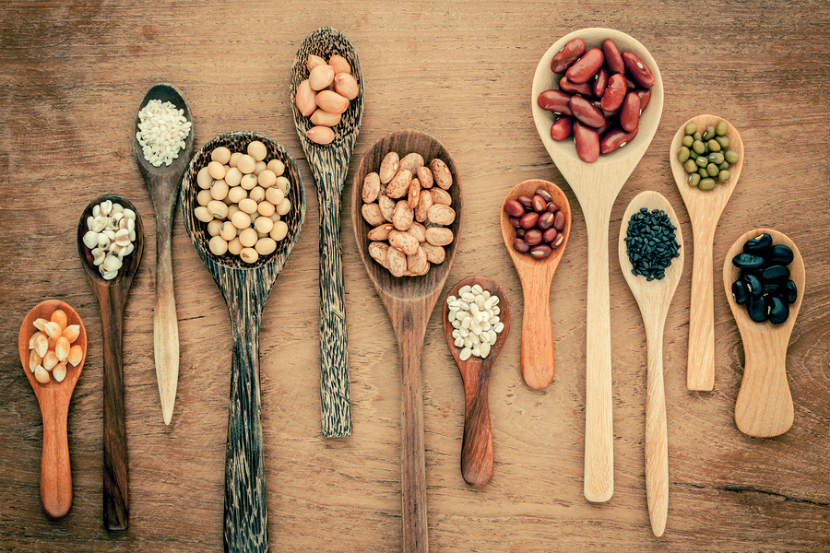
Did you know that there are two types of fibre and that each type has different health benefits? Read on to learn more about soluble fibre and why it’s important for good health.
What is soluble fibre?
Soluble fibre helps you:
-
Manage your blood glucose levels by slowing down the digestion of carbohydrates
-
Lower your cholesterol levels by binding with cholesterol and fat in your diet and getting rid of it in your stool
Soluble fibre also helps manage diarrhea and loose stools. It may also help reduce some of the symptoms of Irritable Bowel Syndrome (IBS). A combination of soluble and insoluble fibre may help to prevent and manage diabetes, heart disease, and some types of cancer like colorectal and breast.
How much soluble fibre do I need?
There is no specific amount of soluble fibre that you should have in your diet. Instead, focus on total fibre (soluble and insoluble). Adult men should get 38 grams of total fibre and adult women should get 25 grams of fibre every day. If you need to lower your cholesterol, aim for at least 10 grams of soluble per day.
What foods have soluble fibre?
Soluble fibre is found in some legumes, grain products, vegetables and fruits. To help you get more soluble fibre, choose these foods:
Legumes that are high in soluble fibre
Each serving below has about 3-5.5 grams of soluble fibre:
|
Food
|
Serving size
|
|
Black beans, cooked
|
175 mL (3/4 cup)
|
|
Lima beans, cooked
|
175 mL (3/4 cup)
|
|
Navy beans, cooked
|
175 mL (3/4 cup)
|
|
Tofu, cooked
|
150 g (3/4 cup)
|
Chickpeas, lentils, flaxseeds, hazelnuts and sunflower seeds have smaller amounts of soluble fibre.
Grain Products that are high in soluble fibre
Each serving below has about 3 grams of soluble fibre:
|
Food
|
Serving size
|
|
Bran “buds” with psyllium
|
30 g (1/3 cup)
|
Cooked oatmeal, O-shaped cereal, rye bread and whole wheat bread have smaller amounts of soluble fibre.
Vegetables and Fruit that are high in soluble fibre
Each serving below has about 2 grams of soluble fibre:
|
Food
|
Serving size
|
|
Avocado
|
½ fruit
|
|
Brussels sprouts, cooked
|
125 mL (1/2 cup)
|
|
Figs, dried
|
60 mL (1/4 cup)
|
|
Orange
|
1 medium
|
|
Sweet potato, cooked
|
125 mL (1/2 cup)
|
Edamame, broccoli, pears with the skin and raw apricots with the skin have smaller amounts of soluble fibre.
How do I get more soluble fibre in my diet?
Getting more fibre in general will likely mean you will get more soluble fibre. Here are some tips to help you get more soluble fibre:
Legumes
-
Add lentils or beans to soups, casseroles and salads.
-
Spread hummus on whole grain bread when making a sandwich.
-
Layer a yogurt parfait with chopped dried apricots and sliced almonds.
-
Add ground flaxseed to cereal, porridge, roti or dahl.
-
Add hazelnuts to homemade banana muffins.
-
Mix your favourite dried fruit with unsalted nuts for a tasty trail mix.
Grain Products
-
Start your day with a bowl of warm oatmeal, topped with pear slices or pieces of orange segments.
-
Make a trail mix using O-shaped cereal, hazelnuts, sunflower seeds, dried edamame and dried figs.
-
Choose whole wheat pasta or bread instead of white varieties.
Vegetables and Fruit
-
Add sliced avocado to a sandwich.
-
Add fresh or dried fruits like oranges or sliced dried apricots to your salad for a tasty lunch or dinner.
-
Slide up vegetables like broccoli cucumbers and add a low fat dip.
-
Enjoy dried figs, pear slices and whole wheat crackers. Top with a sprinkle of blue cheese.
Bottom line
Getting more soluble fibre can be easy with a few small changes. Foods like vegetables and fruit, whole grains, legumes, nuts and seeds have the fibre you need. Get creative in pairing different food groups when making snacks and meals.
You may also be interested in:
Focus on Fibre
All about Oats
All about Legumes
All about Dried Fruit
Last Update – October 31, 2018